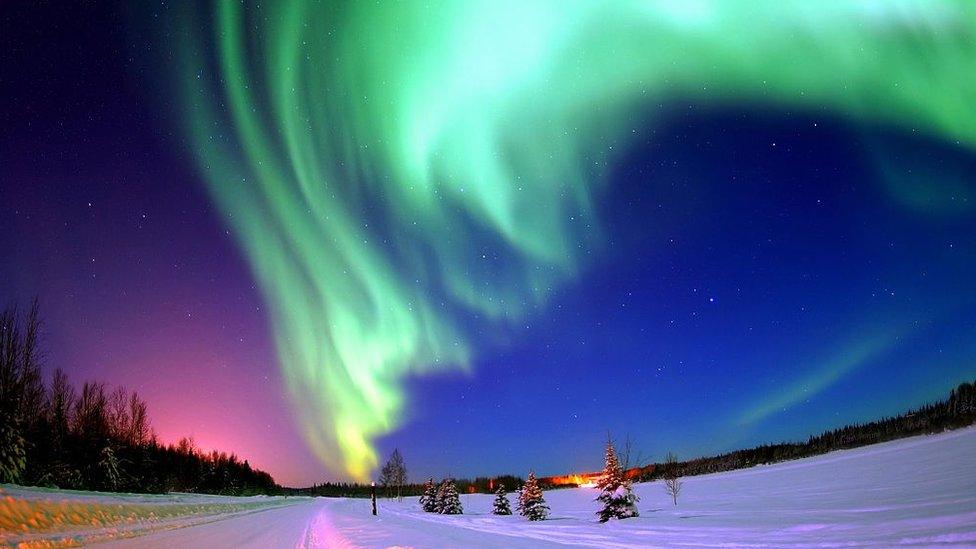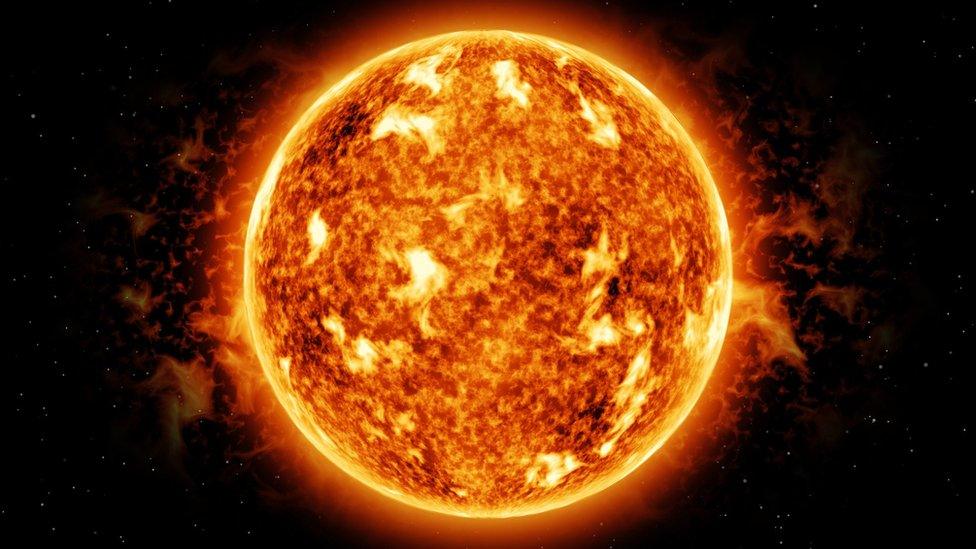Solar storm: How do the Northern Lights happen?
- Published
- comments
Watch: Dr Charlotte Waterfall explains why the Northern Lights were seen across the UK
People across all parts of the UK have been able to see the Northern Lights - a natural light show in the night sky which isn't normally visible in more southern areas.
It was caused by the biggest solar storm for more than 20 years, when huge bursts of charged energy erupt from the Sun out into space.
The solar storm isn't dangerous to people on Earth's surface but can cause some disruption to electronic devices, including satellites orbiting our planet.
Let us know in the comments if you saw them.
Let's take a look at exactly what's going on with our big, bright star at the moment.
If you can't see this gallery click here.
What is a solar storm?
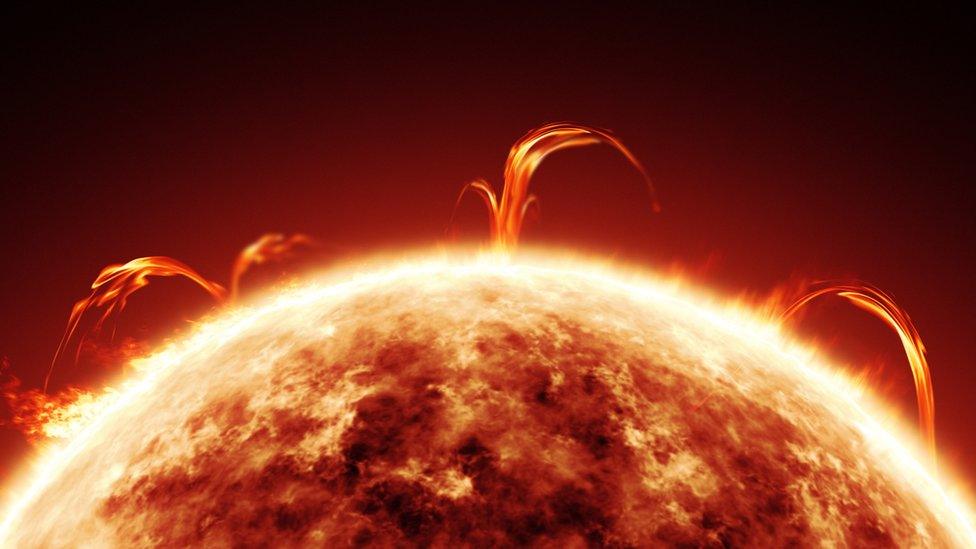
Solar storms occur when a continuous flow of charged particles from the Sun are blasted out into space, eventually hitting the Earth.
Sometimes called space weather, it's completely normal and during periods of high solar activity, Earth experiences increased impacts which is often referred to as a solar storm.
It happens when 'coronal mass ejections (CMEs)' erupt from the star's surface out into space. These charged waves of magnetic gas often happen during periods of high activity, which also sees an increase in solar flares.
Physicist and space expert Professor Brian Cox said: "Without [Earth's] magnetic field to protect us, our atmosphere would have been lost to space long ago. Those colours in the sky are nature reminding us that we're very lucky to be here amidst the violence."
How do the Northern Lights happen?

Astrophysicist, Dr Charlotte Waterfall, a Sun scientist, said: "The Sun is the most active it's been in years - we've seen a large number of coronal mass ejections (CME) directed towards the Earth.
"There have been so many that they've combined in their interplanetary journey into what we call a cannibal CME - so be on the watch for some great aurora displays this weekend."
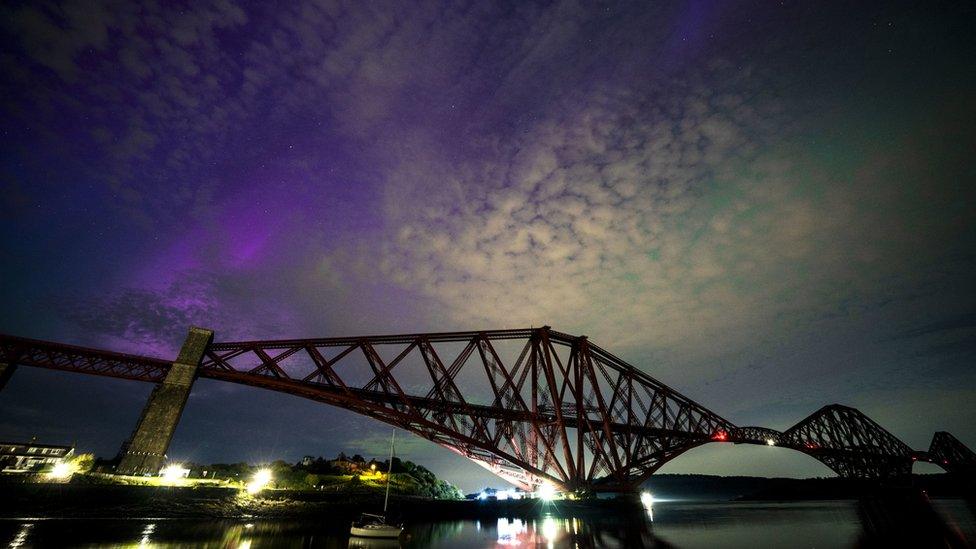
Purple and green skies lit up the Forth Bridge in Scotland.
The Northern Lights, also known as the aurora borealis are caused by the CMEs released from the Sun, throwing out atoms with electric charges, called charged particles out into space.
The lights appear when these charged particles hit gases in the Earth's atmosphere.
The two most common gases in the Earth's atmosphere are oxygen and nitrogen. Oxygen atoms glow green - the colour most often seen in the Northern Lights, while nitrogen atoms are purple, blue and pink.
What is the best way to look at the Northern Lights?
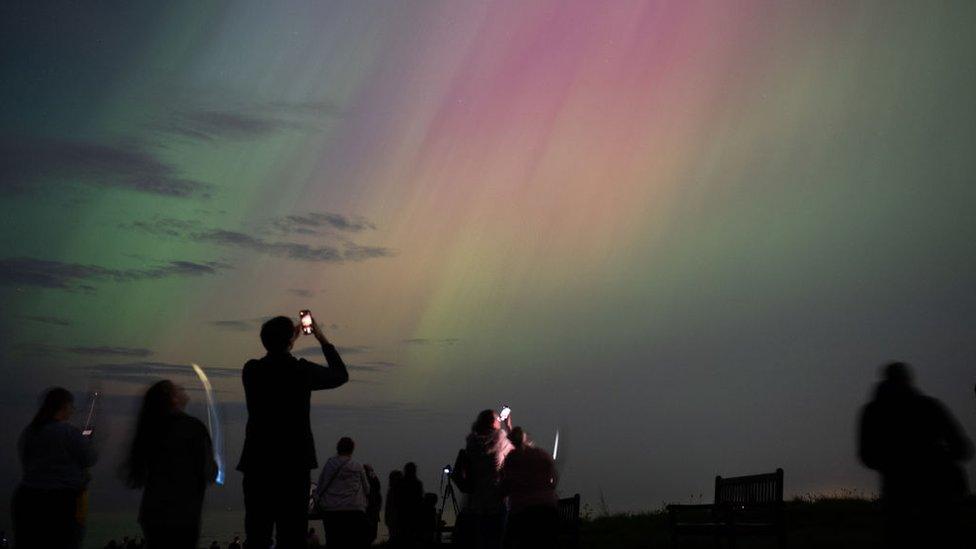
People in Whitley Bay in the north east of England, use their phones to see the aurora borealis, also known as the northern lights
The Northern Lights can only be seen during dark night time hours and, unlike the Sun, are safe to look at with the naked eye.
However, you might be able to see more colourful and vivid displays if you watch through a phone camera, because cameras on devices are able to view more light than the human eye.
What is a solar flare and what causes them?
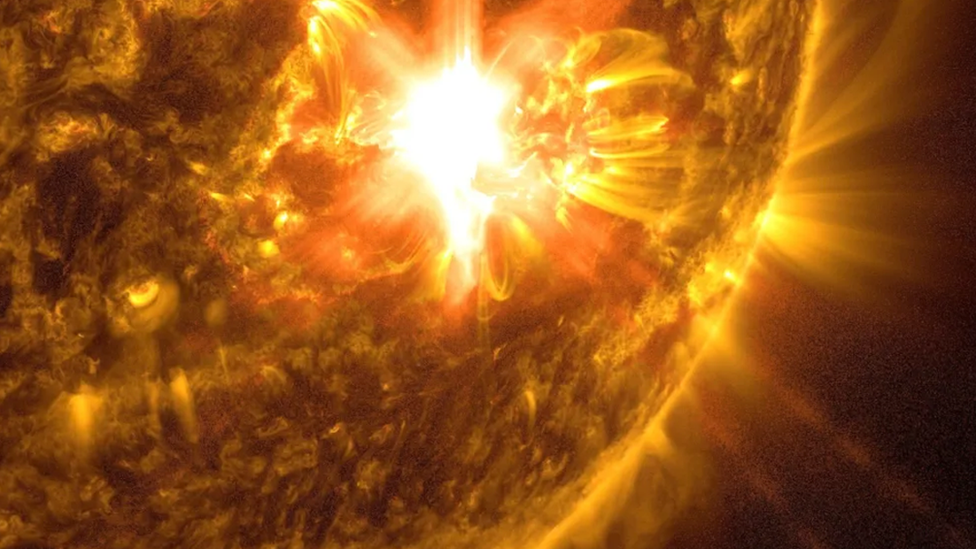
NASA’s Solar Dynamics Observatory captured this image of a solar flare on 10 May
Solar flares are linked to sunspots which are dark patches on the Sun's surface cooler than their surroundings. There are more sunspots around at the moment because there is a peak in solar activity.
Solar flares are electromagnetic radiation that travels from the Sun at the speed of light, reaching Earth in just over eight minutes.
Dr Waterfall says recent activity has seen the largest type of solar flares from the Sun in recent days.
"This active region is absolutely huge," says Dr Waterfall referring to a massive sunspot on the star's surface.
"It's hundreds of thousands of kilometres across and over 15-times the width of Earth.
"In the last few days - it's produced four, X-class flares which is the largest type of solar flare we can have. Usually we'll see one or two X-class flares if we're lucky from a large active region - four in a few days is very exciting."
Solar flares often happen along with coronal mass ejections (CMEs), however charged particles thrown out into space from CMEs take much longer, a couple of hours or a couple of days, to reach our planet.
Will the Northern Lights be visible in the UK again?
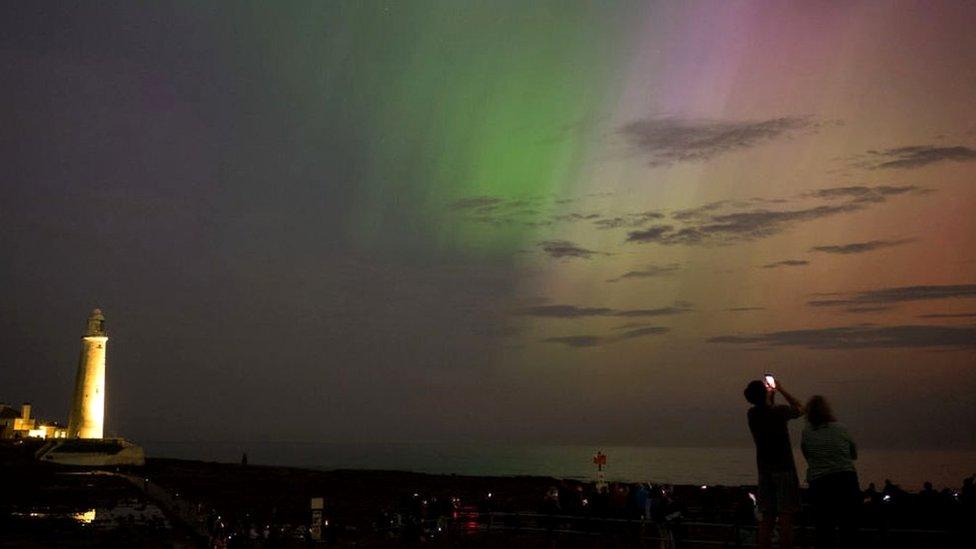
There is more chance of seeing the Northern Lights in places where they aren't normally visible, when the Sun is at its most active.
The Sun goes through an 11-year solar cycle, when it has different levels of activity.
Its most active period, known as the solar maximum, is when the Sun has more sunspots, solar storms are more likely and so are the Northern Lights.
"These aurora are due to a predicted increase in activity on the Sun," says Dr Waterfall.
"We are currently approaching a point, roughly half-way in the solar cycle called 'solar maximum', this is a fancy term that means that the Sun's activity is at its highest level.
"The Sun is particularly active around solar maximum because its magnetic field is becoming increasingly chaotic, tangled, twisted - resulting in a lot of explosive release of energy."
The Met Office says you can't be totally sure when a solar maximum has occurred until after it has happened and sunspot activity reduces.
Do solar storms affect technology?
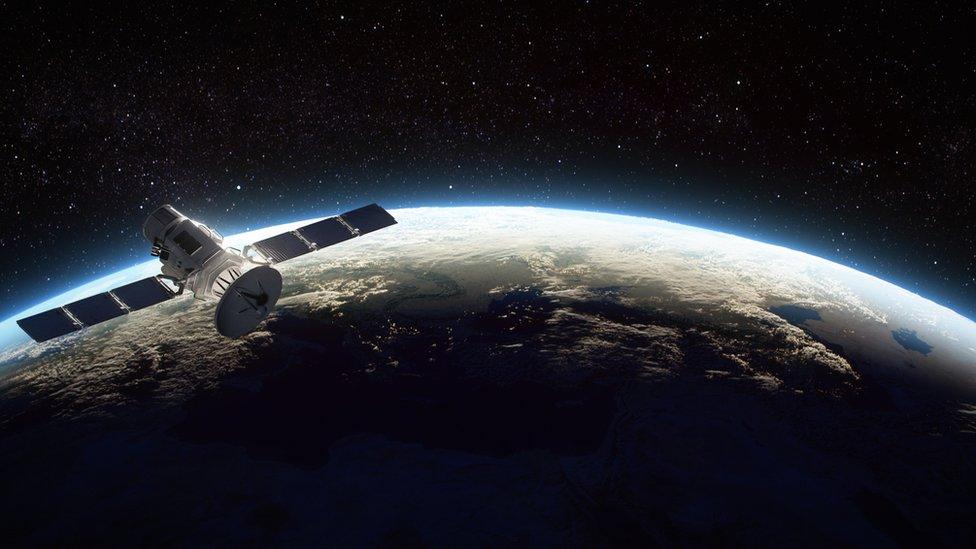
While they are not dangerous to humans, the storm can interfere with technology on the Earth and around it.
Nasa says: "Harmful radiation from a flare cannot pass through Earth's atmosphere to physically affect humans on the ground. However - when intense enough - they can disturb the atmosphere in the layer where GPS & communications signals travel."
- Published11 May 2024

- Published10 June 2021
